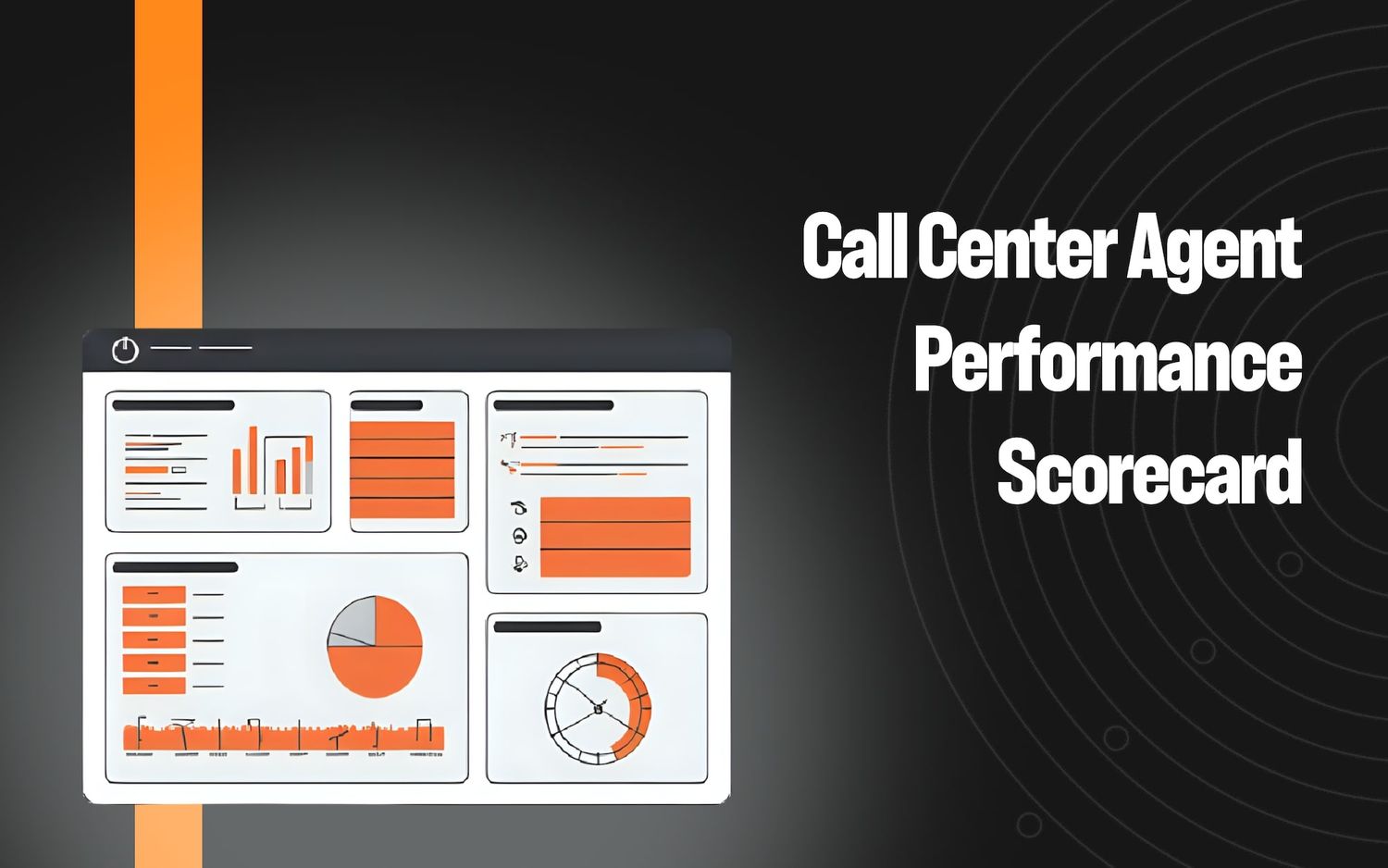What is Contact Center as a Service (CCaaS)?


Contact Center as a Service (CCaaS) is a cloud-based alternative to an on-premises contact center. It streamlines customer communication touchpoints like phone calls, emails, text messages, live chat, and support tickets into one platform with a focus on scalable customer experience.
The Contact Center as a Service solutions provider — not the end-user — maintains and hosts the system in offsite data centers. Users of Contact Center as a Service technology benefit from a solution that adapts to their business needs by eliminating the expenses associated with expensive hardware and in-house IT departments. Rather than investing in hardware, businesses use a CCaaS vendor’s infrastructure to launch and run their contact center. This model allows companies to purchase only the technology they need, which reduces costs and overreliance on internal IT support.
Through the Contact Center as a Service model, companies can either buy contact center infrastructure and have a CCaaS vendor maintain it or rent the vendor’s infrastructure in a pay-as-you-go setup. Other organizations choose a hybrid setup that combines owning some of the infrastructures and renting others.
CCaaS is perfect for many contact centers as it’s flexible and can easily grow with your company. You’re only billed for the technology you use, so there’s minimal risk or upfront investment. Plus, it offers increased capabilities to help you improve customer service.
Benefits of CCaaS
Many modern businesses are switching from on-premise contact centers to Contact Center as a Service solutions. The global market for CCaaS is expected to grow from $4.87 billion in 2022 to $15.07 billion by 2029 at a Compound Annual Growth Rate (CAGR) of 17.5%. Cisco reports that 62% of businesses plan to implement CCaaS solutions in the next 18 months.
Many want to take advantage of the many benefits Contact Center as a Service solutions bring to business communications and overall customer experience. These include:
1. Improved customer satisfaction
With CCaaS, you can provide a better customer experience through features like intelligent call routing and AI-powered conversations. This can lead to improved customer satisfaction and loyalty.
2. Increased agent productivity
A good CCaaS platform can help increase agent productivity by automating repetitive tasks and providing data-driven insights. This frees agents to focus on more complex issues and provides them with the information they need to resolve customer inquiries efficiently.
3. Reduced costs
CCaaS can help reduce your contact center’s operating costs by eliminating the need for expensive on-premises infrastructure. In addition, you only pay for the features you use, so there’s no risk of overpaying for unused features.
4. Increased flexibility, agility, and scalability
CCaaS is a flexible, agile, and scalable solution that can easily grow with your company. A good Contact Center as a Service platform can help you be more agile and responsive to change. You can add or remove features as needed and scale up or down to meet changing customer demand.
5. Enhanced security
CCaaS solutions are typically hosted in the cloud, which provides enhanced security and protection against data loss. In addition, many CCaaS platforms offer additional security features, such as call encryption, to further protect your data.
6. Improved disaster recovery
Since CCaaS solutions are hosted in the cloud, they can provide enhanced disaster recovery capabilities. This is because cloud-based solutions can be quickly provisioned in the event of an outage or disaster.
7. Greater insight
With CCaaS, you can gain greater insights into your contact center’s performance through features like reporting and analytics. This data can help you improve agent productivity, identify areas for training, and optimize the customer experience.
8. Better collaboration
CCaaS can help improve collaboration within your contact center by providing features like chat and VoIP. This allows agents to communicate with each other in real-time, which can lead to better customer service.
9. Increased customer reach and retention
With CCaaS, you can expand your contact center’s reach by adding features like chatbots and omnichannel support. This allows you to interact with customers through their preferred channels, increasing customer satisfaction. And by providing a better customer experience, you can improve customer retention and loyalty. This is because satisfied customers are likelier to stay with your company and recommend your products or services to others.
10. Increased brand awareness and enhanced competitive advantage
A good CCaaS platform can help increase brand awareness by providing features like social media integration and customer testimonials. This can lead to more people knowing about your company and what you have to offer, which can eventually lead to increased sales. You also gain a competitive edge over other companies by providing a superior customer experience. This can help you win new customers and keep existing ones coming back.

CCaaS Vs. UCaaS: What’s the Difference?
Although unified communications as a service (UCaaS) and CCaaS have a comparable design, they ultimately serve different purposes. The chasm between UCaaS and CCaas is that UCaaS is meant to make internal communication more efficient while also promoting collaboration; on the other hand, Contact Center as a Service revamps the customer experience to improve customer satisfaction. Both platforms offer similar features and benefits, but there are some key differences between the two.
Here’s a quick overview of the differences between CCaaS and UCaaS:
Video conferencing
Generally, web conferencing is not as prevalent in CCaaS platforms as in UCaaS solutions. This is because video conferences are used more for internal communication than support ticket resolution.
Features
UCaaS and CCaaS provide call routing capabilities but differ in many other aspects. This makes sense because they serve different goals. CCaaS solutions offer many extra features aimed at improving the customer experience.
Integrations
The integrations included in CCaaS solutions are substantially more than in UCaaS solutions because agents need to receive more than just inbound calls. They also receive customer messages via web chat, email, video, and text. Customers want to be able to contact a customer care representative in whichever manner is most convenient for them. CRM, workforce management software, Microsoft Teams, and AI integrations help with this. They, therefore, are more common with CCaaS solutions than UCaaS.
Cost
UCaaS and CCaaS are less expensive than on-premise solutions since they are both in the cloud. Both of these tools eliminate the need for high-cost installation fees, hardware and software upgrades, as well as the requirement for skilled IT staff. They also both allow you to pay only for what you use. Because a CCaaS system provides greater value in its capabilities and requires more capabilities to guarantee a pleasant customer experience, it generally costs more.
Some businesses choose a hybrid solution that combines CCaaS and UCaaS. The idea is that this would give them the best of both worlds: the increased efficiency of UCaaS for internal communication and the customer-centricity of CCaaS for external communication.
Features of an Effective CCaaS Platform
A single-resource approach
An effective Contact Center as a Service platform takes a single-resource approach where an agent only needs the CCaaS solutions app– no additional software or hardware. And they can use this to work from any device and location. The platform should have an efficient way to manage all the channels, including voice, chat, email, and social media, from a single interface. This will help agents respond faster and provide a better customer experience.
Intelligent call routing
Look for features like automatic call distribution (ACD), which can help route calls to the best-suited agent based on skills, language, and location. Another helpful feature is real-time queuing, which can give customers an estimated wait time to decide whether to hold or try back later. These features are essential for managing call volume and ensuring calls are routed to the right agent.
Reporting and analytics
A good CCaaS platform will offer reporting and analytics capabilities to help you track and measure performance. This data can improve agent productivity, identify areas for training, and optimize the customer experience.
Integration with existing systems
The CCaaS platform you choose should integrate with your existing customer relationship management (CRM) system. This will help ensure a seamless customer experience and allow you to share data between systems.
Flexible pricing
Look for a CCaaS platform that offers flexible pricing options, so you only pay for the features you use. This can help save money and ensure you’re not overpaying for features you don’t need.
AI-powered conversations
The best CCaaS platforms leverage Artificial Intelligence (AI) and Natural Language Processing (NLP). These technologies provide unmatched real-time insights during phone calls. Moreover, AI can help you automate repetitive tasks, such as customer service interactions, so your agents can focus on more complex issues. AI can also help you provide a more personalized customer experience by understanding customer intent and providing relevant recommendations.
Choosing the Right CCaaS Vendor for your Enterprise
Many CCaaS vendors are on the market today, each offering unique features and benefits. Here are some of the most popular:
- 8×8
- Genesys
- Nice CX One
- Five9
- RingCentral
- Vonage
- Content Guru
- Cisco BroadSoft
- Talkdesk
- Avaya OneCloud
With many companies now offering CCaaS platforms with similar features, it can be challenging to identify which one will be the best fit for your business. The first step is to understand what your company requires and wants to achieve and then match those goals with a CCaaS solution with the right features and services. Here are some steps that may help point you in the right direction.
Assess your contact center environment
You first need to look at your contact center operations and support infrastructure. This will give you a clear idea of what your business needs from a CCaaS solution. Do you want to take some of your existing on-premises contact center technologies with you if you move into the cloud? Some vendors can offer hybrid platforms, so you don’t have to eliminate all of the tools you’re already using.
Know your business goals
The next step is understanding what your business wants to achieve with a CCaaS solution. Perhaps you want to improve customer satisfaction or first-contact resolution rates. Maybe you need to reduce costs or increase agent productivity. Once you know your goals, you can start looking for a vendor with the features and services needed to help you reach them.
Compare features and services
Not all CCaaS vendors are created equal, and each will offer a different set of features and services. Make sure you take the time to compare different vendors side-by-side to see which one offers the best combination of features and services for your company’s needs.
Consider the total cost of ownership (TCO)
The last thing you want to do is sign up for a CCaaS solution that will cost you more in the long run. Make sure you take the time to calculate the total cost of ownership for each platform you’re considering, including things like licensing fees, monthly service charges, and integration costs. This will help you find a solution that fits your company’s budget.
Read online reviews
Don’t forget to read online reviews of different CCaaS vendors before making your final decision. This can give you insight into how well each platform performs in the real world and whether or not other businesses have been happy with their experience.
Conclusion
Contact Center as a Service presents a vital service that an increasing number of businesses are employing to improve their business operations. Companies will be able to deploy enticing CCaaS solutions more readily as they move to the cloud. They will leverage them for enhanced business continuity and improved customer experience. By embracing CCaaS as a contact center platform solution, you are repositioning your company to give your customers the service they deserve.
Keep reading
View all





